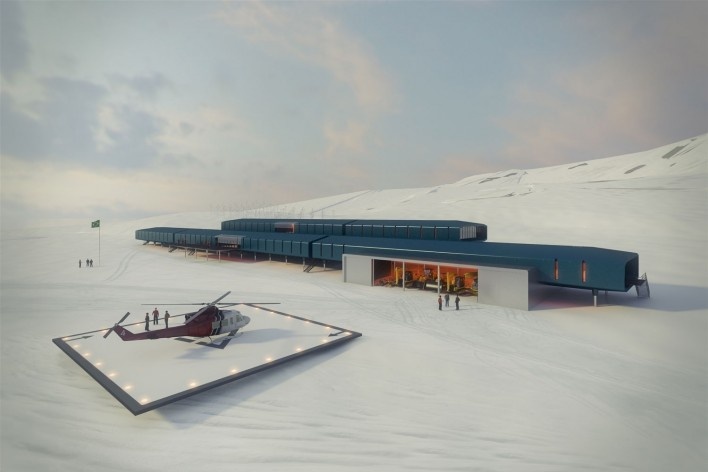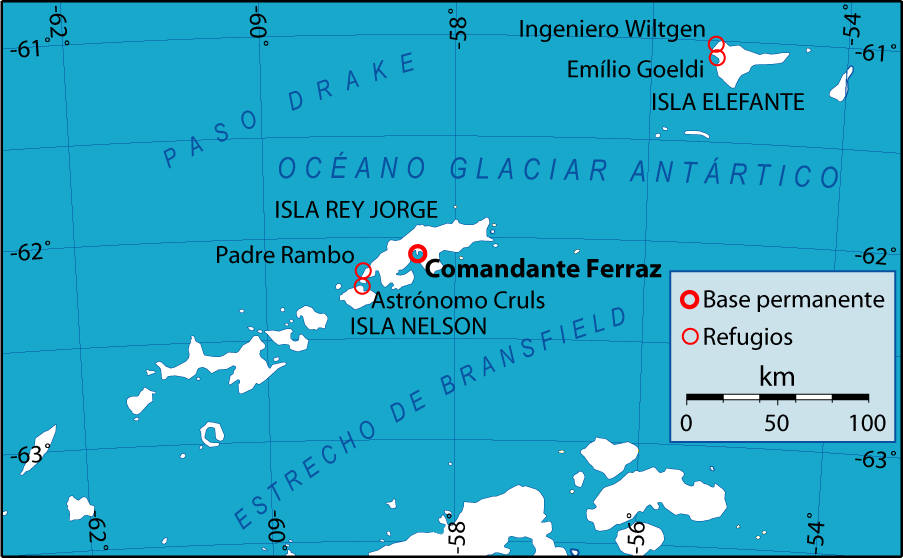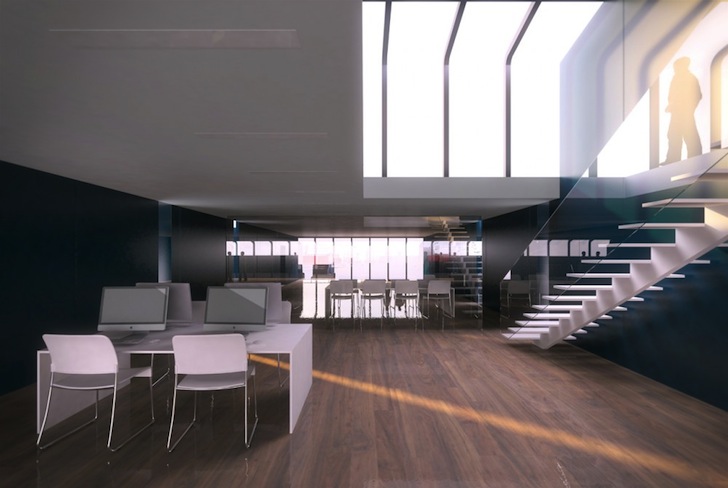RIO DE JANEIRO, BRAZIL – Vice President Hamilton Mourão will fly on Monday, January 13th, for Antarctica, where he will be the main representative of the Brazilian government in the reinauguration of Comandante Ferraz Station, the country’s research base on the continent.
The new building, located on King George Island, in Admiralty Bay, is being erected next to the current base, which has a temporary structure. The official inauguration will be held on Tuesday, January 14th.
The Comandante Ferraz Station was founded in 1984, but in 2012 it was struck by fire. On that occasion, two military personnel died and 70 percent of its facilities were lost.
The federal government invested some US$100 (R$400) million in the works, and the facility features the most advanced equipment in the world. On-site, researchers will conduct studies in the areas of biology, oceanography, glaciology, meteorology, and anthropology.
“[The station] will provide better working conditions to our researchers, it will maintain our presence in the work being conducted by the international scientific community, to seek answers and advances in knowledge, technology, other areas that are researched there.”
“Concurrently, it allows the Navy to conduct training in terms of logistics, in terms of displacement in turbulent waters. We of Bolsonaro’s government are delighted to see this opportunity to reopen Comandante Ferraz Station and to provide a new role for the research work being conducted there”, said the vice-president in an exclusive interview with the Brazilian Communication Company (EBC).
To reach Antarctica, the vice-president’s entourage will board in Brasília and make a first stop in the city of Punta Arenas, extreme south of Chile. From there, it will board again, this time in a Hercules C-130 aircraft of the Brazilian Air Force (FAB), the only type of aircraft used to reach the icy continent, since it is better prepared for landings and take-offs on the area’s runways.
The flight from Punta Arenas to Antarctica takes approximately three hours. The landing will occur in the vicinity of the Chilean station. From there, the vice-president and advisors will fly by helicopter to the Brazilian station. The vice-president is expected to sleep in Antarctica on the night of the 14th and return the next day to Punta Arenas, before returning to Brazil.
Initially, President Jair Bolsonaro was expected to attend the reinauguration of the Comandante Ferraz Station, but due to medical advice, the Chief Executive cancelled the trip and assigned it to the Vice President.
Antarctica Station
Covering an area of 4,500 square meters, the station will be able to accommodate 64 people, according to the Navy. The new research center will feature 17 laboratories.
Fiocruz scientists are among the first to work at the new station, developing research in microbiology, from the analysis of fungi that only exist in Antarctica and the medicinal power of these microorganisms. The International Atomic Energy Agency (AEIA) has also confirmed that it will develop meteorological projects at the Brazilian base.
To remain above the dense snow layer that builds up in winter, the building features an elevated structure. The supporting pillars weigh up to 70 tons and elevate the research center over three meters above the ground. The rooms, with two beds and bathrooms, will house researchers and military personnel.
The station also includes a video room, meeting areas, a gym, a kitchen and a medical area for emergencies.
Fire doors have been installed in all of the base’s units and smoke sensors and fire alarms have been placed. In the machines and generators’ rooms, the walls are built of ultra-resistant material. In the event of a fire, they can withstand fire for two hours and prevent it from spreading to other areas before the fire squad arrives.
The station also has a wind farm that uses the Antarctic winds. Panels to capture solar energy have also been installed at the base to generate power, particularly in summer, when the sun in Antarctica shines for more than 20 hours a day.
The project design for rebuilding the station is fully Brazilian but has been executed since 2017 by China Electronics Import and Export Corporation, which won the government international bid tender.
The engineering company was forced to divide the task into three stages, as between the months of April and October it is impossible to carry out any work outdoors in Antarctica due to the extreme cold, snowstorms and strong winds.
As a result, the Chinese built the modules in China during the winter and transported them to Antarctica in the summers of 2017, 2018 and 2019 in order to carry out the installation.




